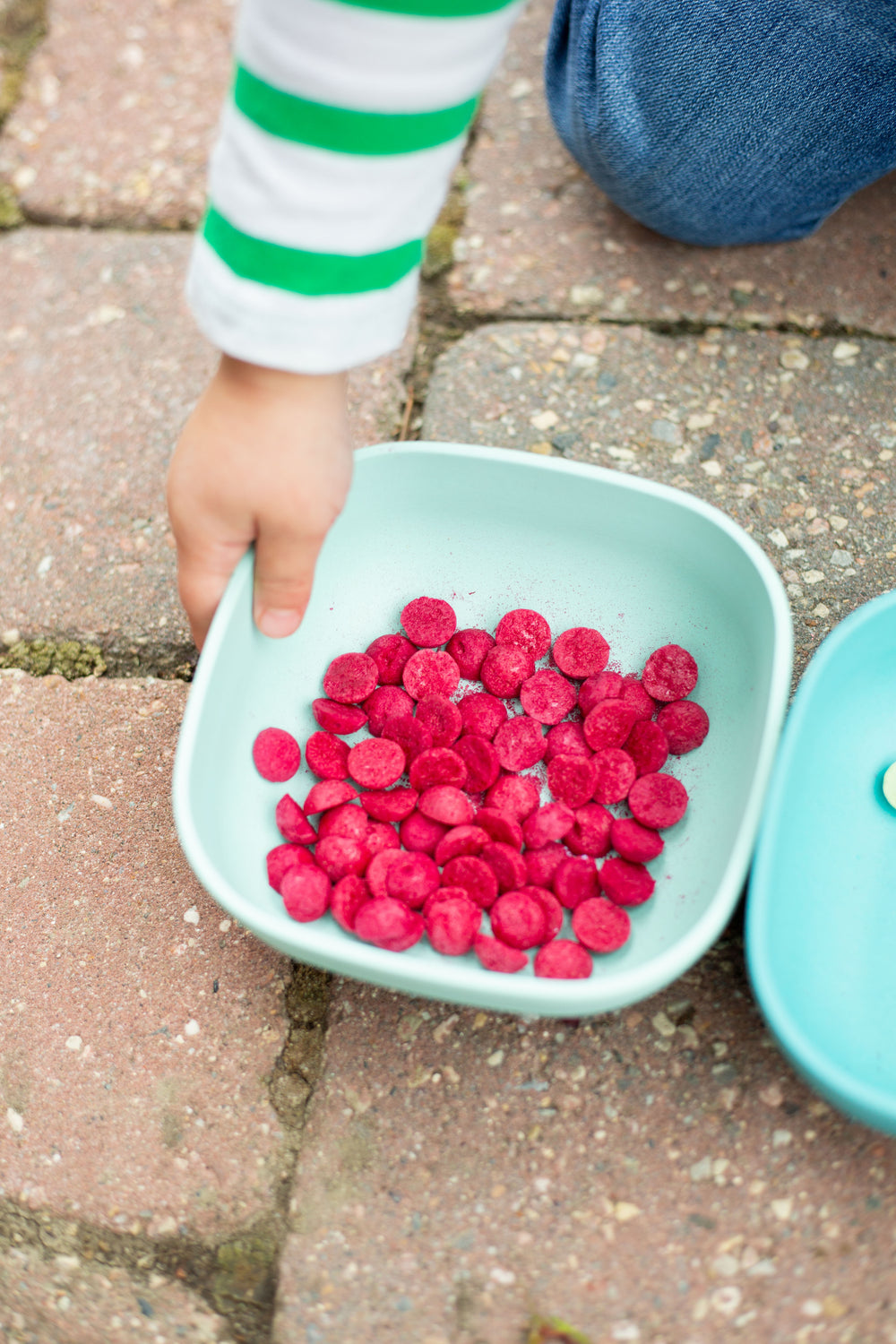Busting the Salt Myth – Is Salt Safe for Babies?
Most resources on infant nutrition warn against adding salt to baby food because babies’ kidneys are still developing.
The problem is, many of these resources aren’t giving you the whole picture.
So, to give you the whole picture on the topic, I want to dispel the myth that salt is bad for growing children. This will help you make more informed decisions around salt – about how much salt to use and when you can safely start sprinkling it into your child’s diet.
Salt is not the enemy – it’s an essential nutrient

Salt is an essential nutrient, meaning, we need to get it from the foods we eat.
Salt plays a vital role in fluid balance and blood pressure in the body, and it’s necessary for nerve impulses and muscle contractions (including our heartbeat). Salt is also involved in the transportation and absorption of all other nutrients in the body.
Slipping on our science goggles for a sec, salt (NaCl) is made up of two types of ions:

- Na - Sodium
- Cl - Chloride
Each of these chemical elements help the body perform vital functions as follows:
Sodium (Na)
- regulates the amount of water in and around our cells
- maintains proper blood volume and blood pressure in our bodies
Chloride (Cl)
- works with the kidneys to balance the fluids in our bodies
Is salt bad for babies?
Salt gets a bad rap in North America because of its connection to high blood pressure.
While it’s imporant to make sure you’re not giving your baby too much of this mineral (like any ingredient), it’s equally true to make sure you’re giving them enough – after all, as we can see from above, salt is essential for proper body functioning, including for infants.
So, what’s the right amount of salt for babies to eat?
It depends on your teeny bop’s age!
How much salt is ok for babies?
From 0 – 4 months of age, babies’ kidneys are not fully developed, so, their kidneys cannot handle excess sodium. That means they should not be eating extra salt in their food.
However, because babies at this age are not eating solid foods but drinking breast milk (or formula) excess salt is not typically an issue. Baby is naturally ingesting the proper amount of sodium straight from the source: mama’s breast milk!
From 6 – 12 months old, babies are switching to solids and so, aren't going to be getting as much sodium from breast milk anymore. You can safely start sprinkling salt into babies' purees and solid food!
After 12 months of age, babies’ kidneys are fully developed, so, they have the same ability as adults to process sodium.
When to use salt in baby food – Sprinkle to taste!

When baby is old enough to eat purees and solids, you can safely start sprinkling salt in their food to taste.
Not only will lightly salting foods get this essential nutrient in their diet, but it will also help increase palatability with healthy (but bitter) foods like certain veggies (oh heeeey, broccoli🥦)
Sprinkling salt (and sauteeing in healthy fats like olive oil) helps make healthy foods tastier, which will help your baby develop healthier food habits as they grow.
>> Boom Baby adds juuuust the right amount of salt to our Beef Bites and frozen puree pucks to make sure baby gets this essential nutrient – and loves the taste!
What kind of salt should I use for my baby?
The answer to this question depends on what you’re looking for as there’s no real best salt option out there.
To give you some direction, take a look and compare these three common forms of salt below👇
Table salt
The most common form of salt, table salt contains iodine which has been added to prevent iodine deficiencies. So, if you’re concerned about your baby getting enough iodine, then use table salt to add flavour and nutrition to foods. Table salt may also contain more additives, such as anti-caking agents, so keep that in mind if that affects your decision.
Kosher salt
Typically less processed, kosher salt is larger and flakier than other, finer salts. Because of its bigger shape and texture, it will contain less sodium per scoop when compared with a finer salt. It’s got a great texture for sprinkling on different foods, too!
Sea salt & Himalayan salt
Sea salt and Himalayan salt come in various sizes, from coarse to fine. They’re generally very low-processed and may contain other trace minerals. We use Pink Himalayan Salt in some of our foods in the Boom Baby Shop because we love the taste and the trace mineral content!



Leave a comment